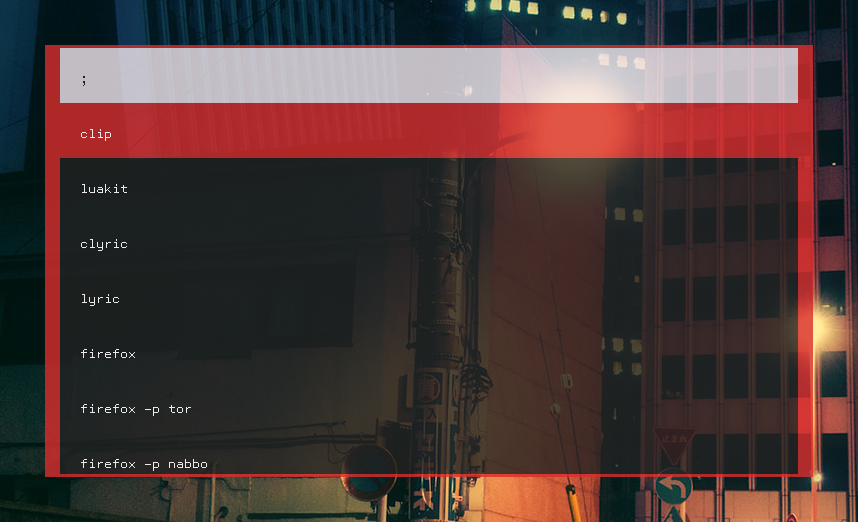A menu for Xorg, 'cause I was bored
This is a simple menu for Xorg, like dmenu(1).
This was the perfect excuse to learn how to use Xlib.
Check out the manpage for further documentation. Check out also the template for the resources.
- two layout:
horizontal(a là dmenu) andvertical(a là rofi); - highly customizable (width, height, position on the screen, colors, borders, ...);
- transparency support
- support for both Xft and bitmap font
- Xlib
- Xinerama for multi-monitor support
- Xft for TrueType font support
- pkg-config (optional) to aid the autoconfiguration
- mandoc (optional) to generate the markdown version of the manpage
The usual spell:
$ ./configure
$ make
-
Does not run / Hangs
At the startup mymenu will read
stdinfor a list of item, only then it'll display a window. Are you sure that you're passing something on standard input? -
Will feature $X be added?
No. Or maybe yes. In fact, it depends. Open an issue and let's discuss. If it's something that's trivial to achieve in combo with other tool maybe is not the case to add it here.
-
Is feature $Y present? What $Z do? How to achieve $W?
Everything is documented in the man page. To read it, simply execute
man -l mymenu.1ormandoc mymenu.1 | less(depending on your system the-loption may not be present).
I'm using this script to launch MyMenu with custom item
#!/bin/sh
cat <<EOF | /bin/sh -c "$(mymenu "$@")"
sct 4500
lock
connect ethernet
connect home
connect phone
ZZZ
zzz
...
EOFYou can generate a list of executables from $PATH like this:
#!/bin/sh
path=`echo $PATH | sed 's/:/ /g'`
for p in $path; do
for f in "$p"/*; do
[ -x "$f" ] && echo "${f##*/}"
done
done | sort -fu | /bin/sh -c "$(mymenu "$@")"You can, for example, select a song to play from the current queue of amused
if song=$(amused show | mymenu -p "Song: " -A); then
amused jump "$song"
fiThe same, but with mpd:
fmt="%position% %artist% - %title%"
if song=$(mpc playlist -f "$fmt" | mymenu -p "Song: " -A -d " "); then
mpc play $(echo $song | sed "s/ .*$//")
fiOf course you can as well use the dmenu_path and dmenu_run scripts
that (usually) comes with dmenu.

